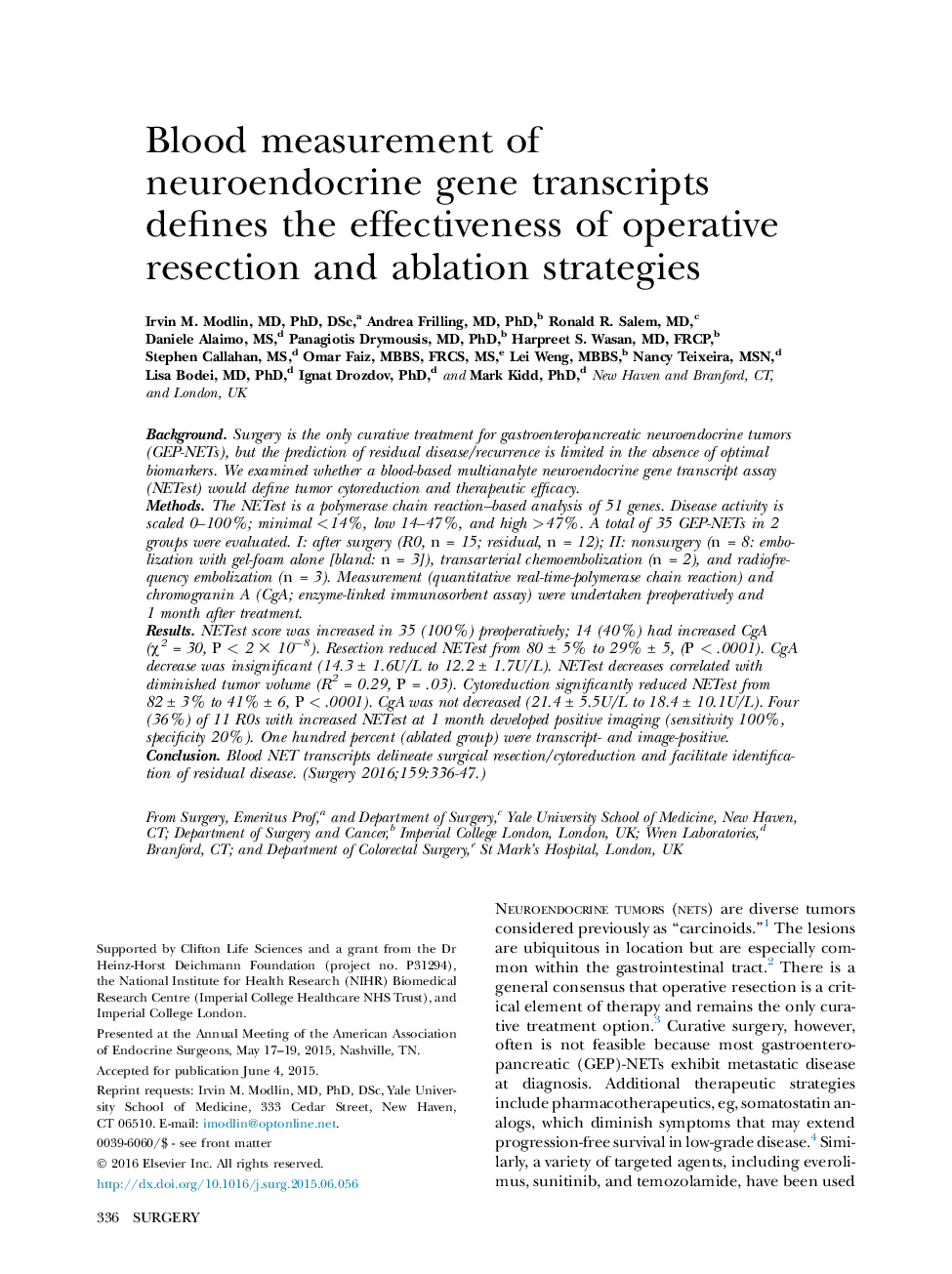| Article ID | Journal | Published Year | Pages | File Type |
|---|---|---|---|---|
| 4306670 | Surgery | 2016 | 12 Pages |
BackgroundSurgery is the only curative treatment for gastroenteropancreatic neuroendocrine tumors (GEP-NETs), but the prediction of residual disease/recurrence is limited in the absence of optimal biomarkers. We examined whether a blood-based multianalyte neuroendocrine gene transcript assay (NETest) would define tumor cytoreduction and therapeutic efficacy.MethodsThe NETest is a polymerase chain reaction–based analysis of 51 genes. Disease activity is scaled 0–100%; minimal <14%, low 14–47%, and high >47%. A total of 35 GEP-NETs in 2 groups were evaluated. I: after surgery (R0, n = 15; residual, n = 12); II: nonsurgery (n = 8: embolization with gel-foam alone [bland: n = 3]), transarterial chemoembolization (n = 2), and radiofrequency embolization (n = 3). Measurement (quantitative real-time-polymerase chain reaction) and chromogranin A (CgA; enzyme-linked immunosorbent assay) were undertaken preoperatively and 1 month after treatment.ResultsNETest score was increased in 35 (100%) preoperatively; 14 (40%) had increased CgA (χ2 = 30, P < 2 × 10−8). Resection reduced NETest from 80 ± 5% to 29% ± 5, (P < .0001). CgA decrease was insignificant (14.3 ± 1.6U/L to 12.2 ± 1.7U/L). NETest decreases correlated with diminished tumor volume (R2 = 0.29, P = .03). Cytoreduction significantly reduced NETest from 82 ± 3% to 41% ± 6, P < .0001). CgA was not decreased (21.4 ± 5.5U/L to 18.4 ± 10.1U/L). Four (36%) of 11 R0s with increased NETest at 1 month developed positive imaging (sensitivity 100%, specificity 20%). One hundred percent (ablated group) were transcript- and image-positive.ConclusionBlood NET transcripts delineate surgical resection/cytoreduction and facilitate identification of residual disease.
